Occupational Therapy Students Gain Awareness in Culture Lab
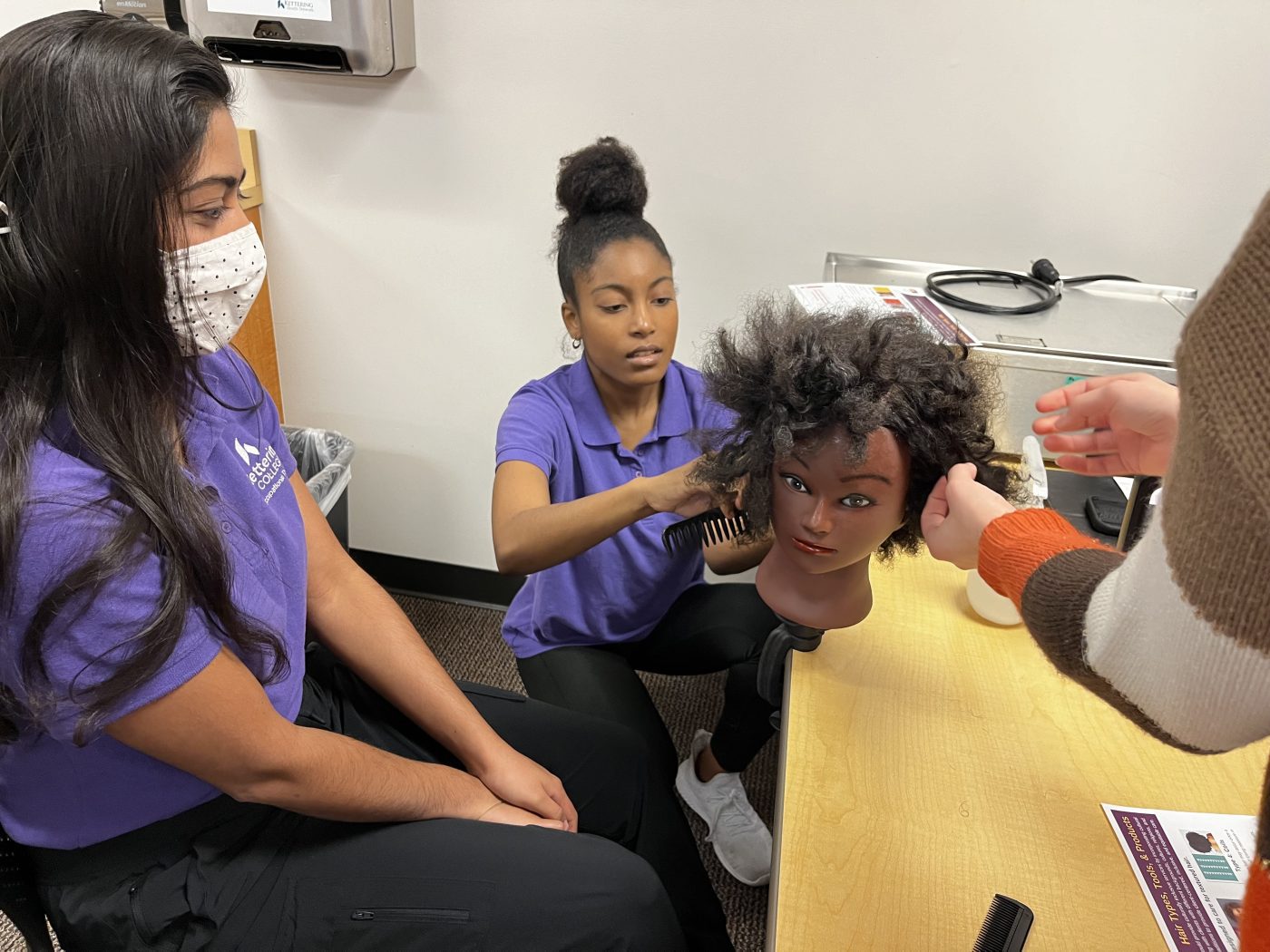

December 11, 2023 – Occupational therapists (OTs) help clients return to daily activities that they want or need to accomplish to help them feel like themselves again. One crucial way OTs do this is by taking the time to understand their clients’ wants and needs as unique individuals.
Dr. Shanese Higgins is a professor and the chair of the Occupational Therapy doctoral (OTD) program. She recently held an in-class culture lab where students were able to “explore hair texture and hair coverings as an occupation of importance that they must address in OT practice to ensure culturally responsive care.”
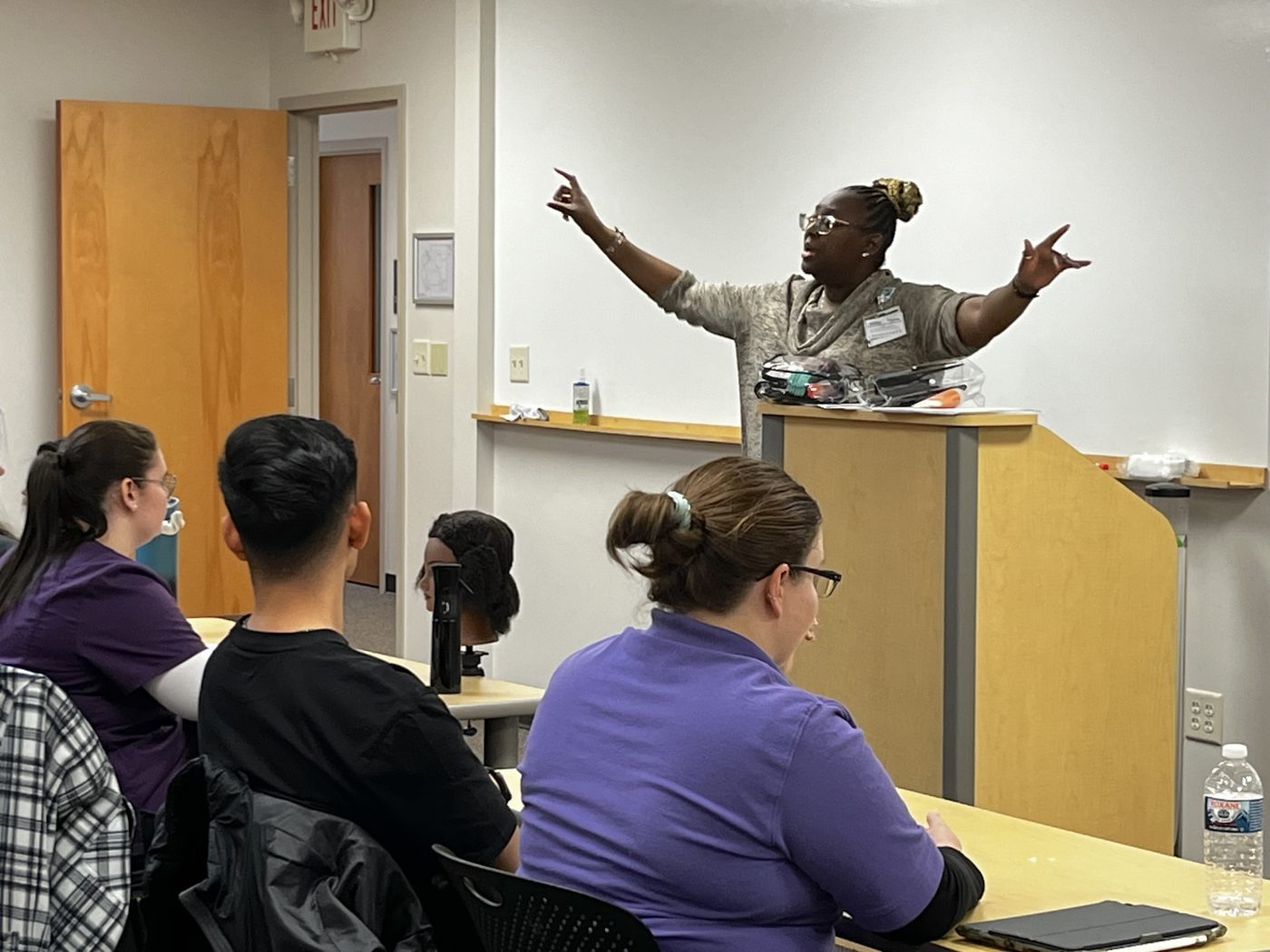

The classroom contained a variety of mannikin heads with different hair textures, a male mannikin with a beard, and a mannikin with a hair covering. Each student received a handout that explained different hair types along with which products and tools to use on them. Dr. Higgins told students, “I want to expose you to different textures of hair…Today is an opportunity to do something you should absolutely never do in real life and that is ask someone if you can touch their hair.”
Dr. Higgins told the class, “The reality is that OT consists mostly of white women. The profession needs to do better, but the reality is the majority of practitioners do not have experience addressing different textured hair, even within their own communities.”
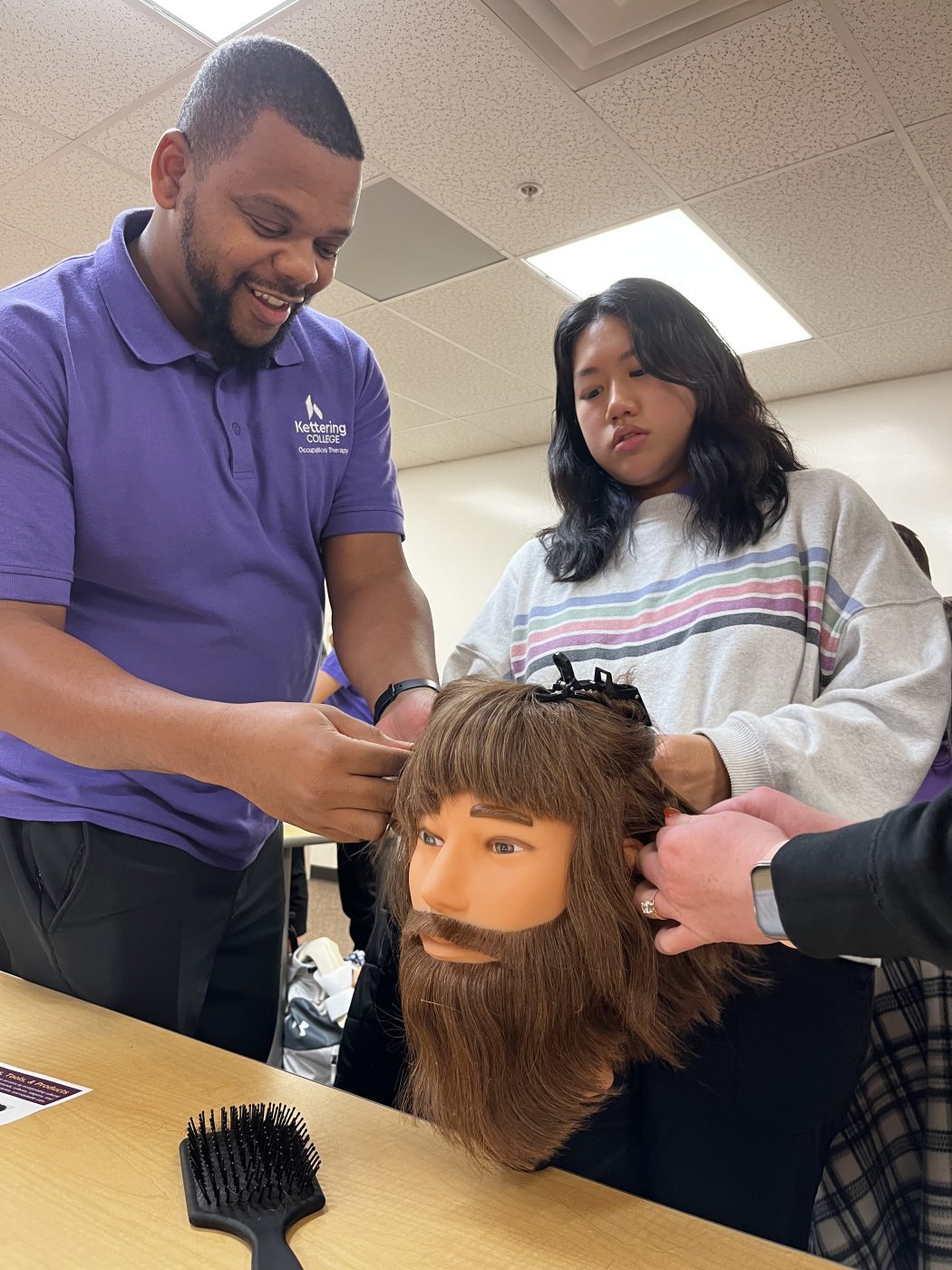

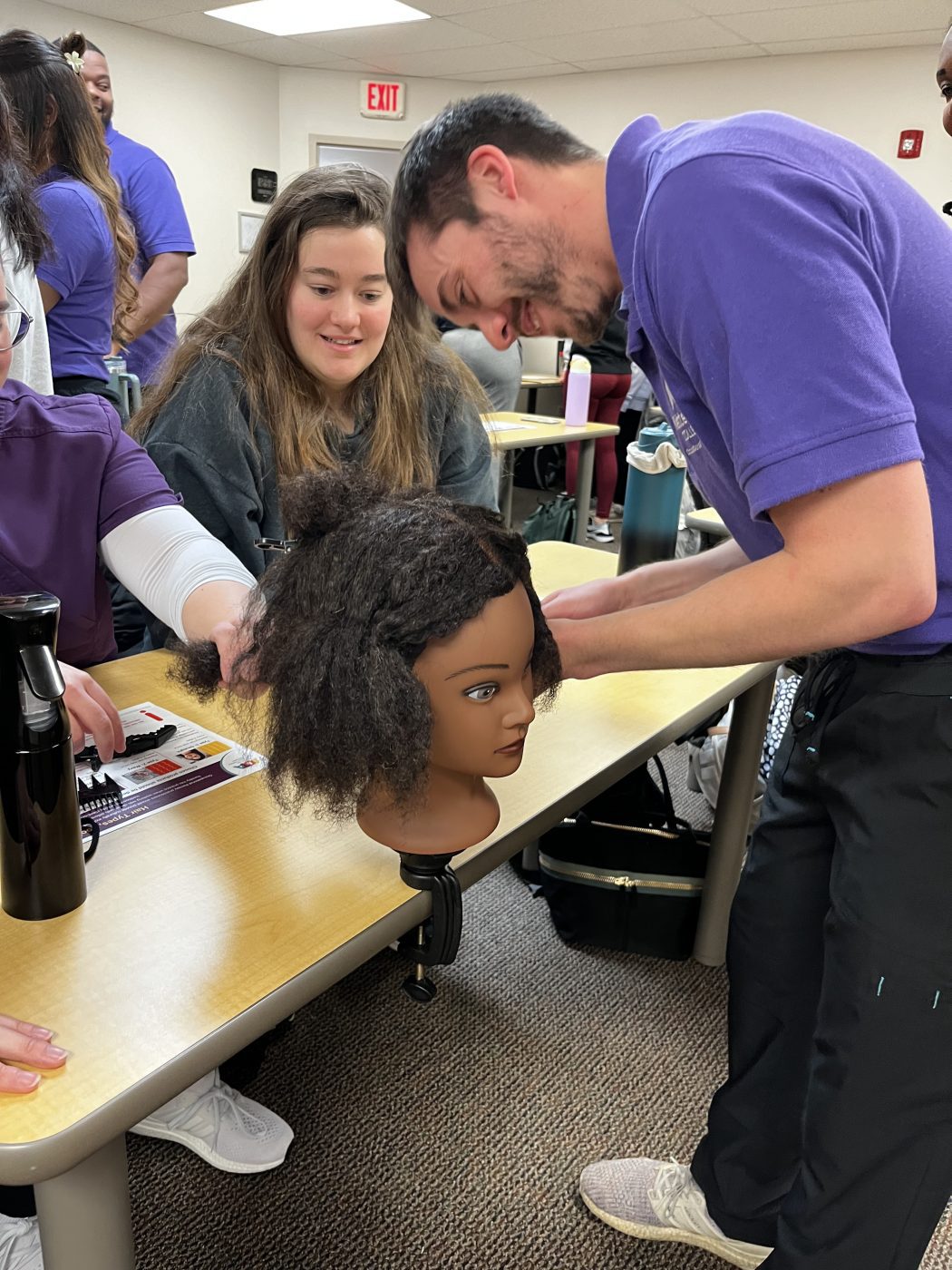

She showed the students the tiny comb, which is intended for straight hair only, that is given to patients in a hospital. She said, “We might comment that a client (in a hospital setting) looks disheveled. We don’t always take into account if a person is in a hospital, they don’t always get what they need for their culturally specific hair or hair covering. We can make the wrong assumption that someone is not caring for themselves, but it can be that the combs and shampoo hospitals give out are for people with straight hair only—not curly or coily hair.”
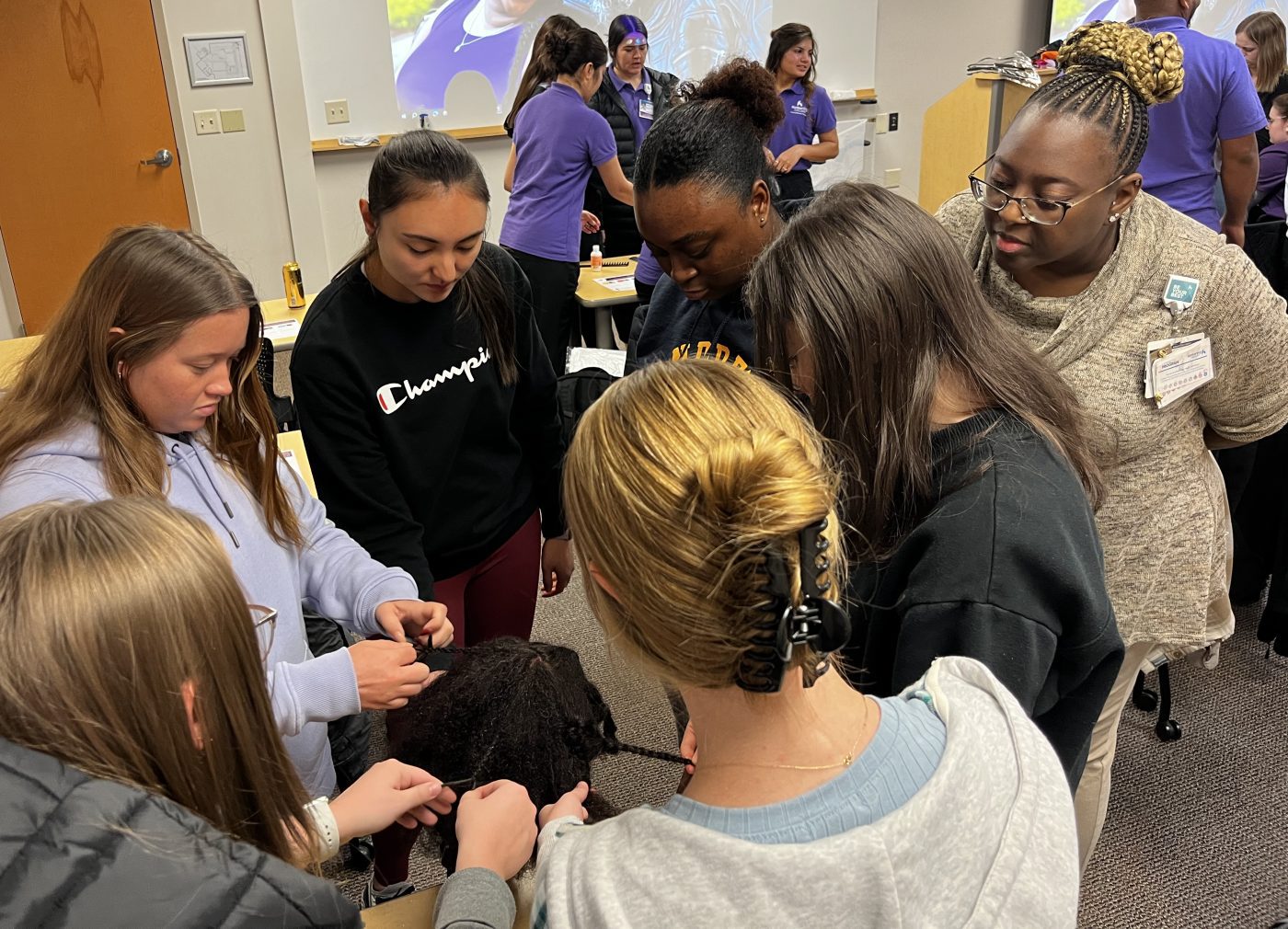

She continued, “When you walk into a hospital room, and you want to work on hair washing, and the client tells you they’re not going to do it, it doesn’t mean they’re being non-compliant. You might not have the products they need or they might not wash their hair as frequently as an OT might assume. This doesn’t mean poor hygiene—it means different hair textures and styles require different attention, and today I’m going to introduce you to that.”
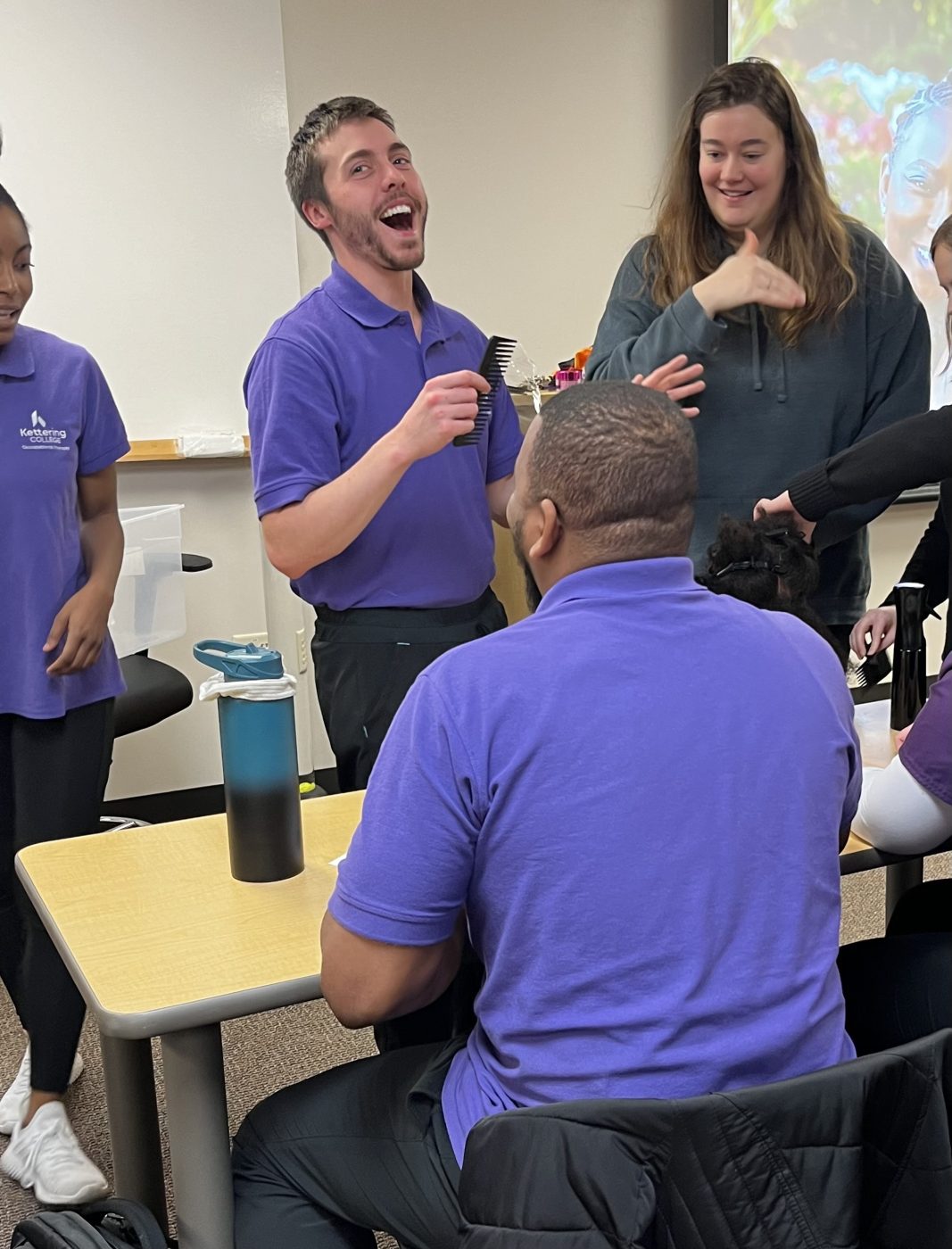

Dr. Higgins mentioned there have been reports of OTs going into patients’ rooms and telling them they can’t help them with their grooming because they have no idea how to do that kind of hair. She said, “Not knowing is not the issue. Not being able to learn is the issue.”
She showed the class different apparel found in various cultures such as hair bonnets for thick, coily hair and a hair covering that people often wear for their religious practices. She reminded students, “We need to know how to do these things to help. The point is for you to get comfortable.”
It was then time for students to get their hands on this knowledge by working on the mannikins. As the students rotated through the stations, Dr. Higgins said, “This is your safe space. Be respectful of the mannikins. Pretend they are actual people. I want you to walk around the room and take the time to feel the textures and use the tools respectfully as well as tying different hair coverings. Get familiar with the different textures and curl patterns and what the considerations are. You don’t have to memorize it, but I’m giving it to you to give you awareness.”
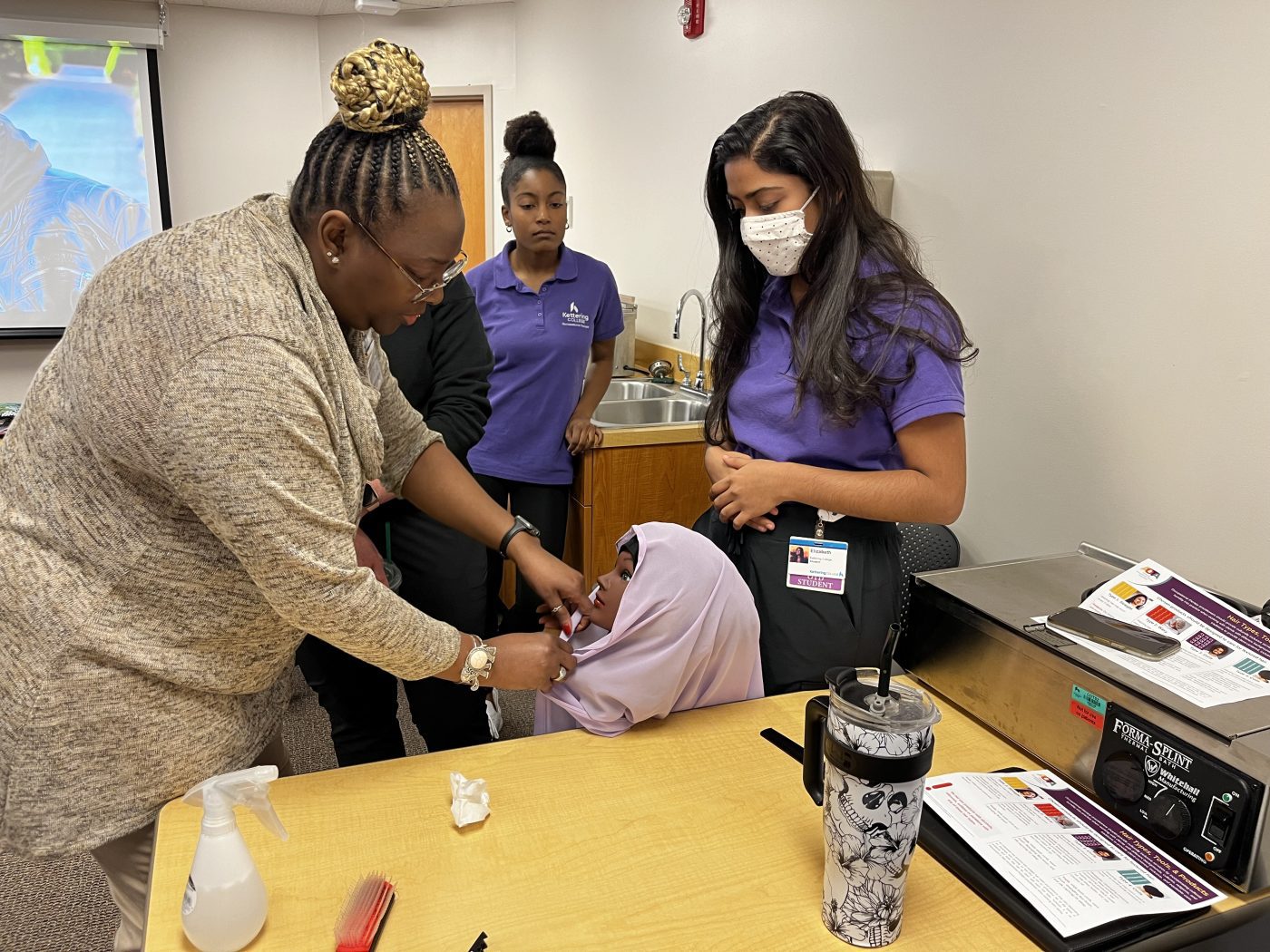

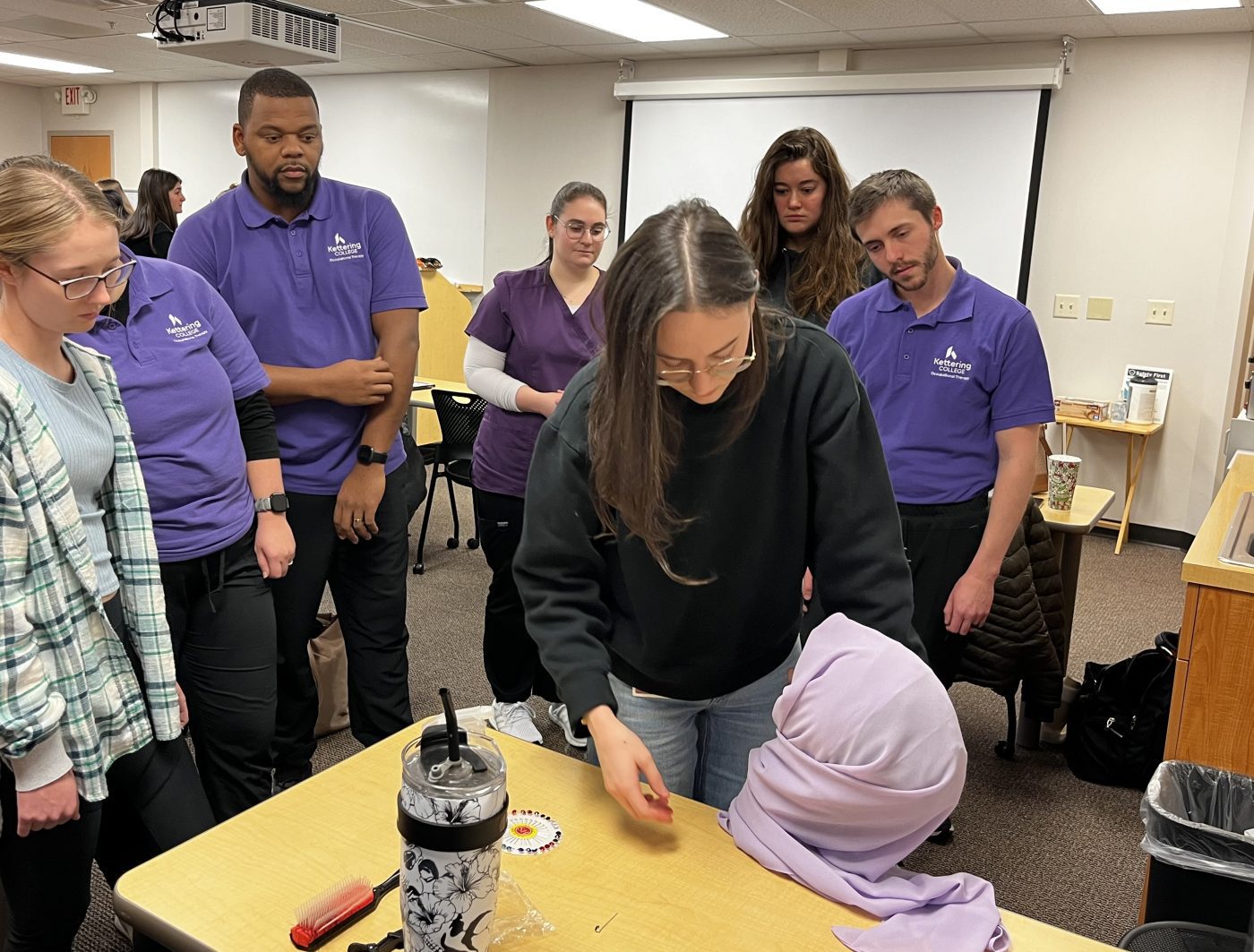

As the OTD students worked together to best serve their diverse clients in the culture lab, Dr. Higgins walked around the room and encouraged the groups. She said, “This is all a part of natural grooming, and if our job is to help them get back to a more fulfilling life, we have to do this. We have to do it in a culturally responsive and appropriate way.”
Print This Page